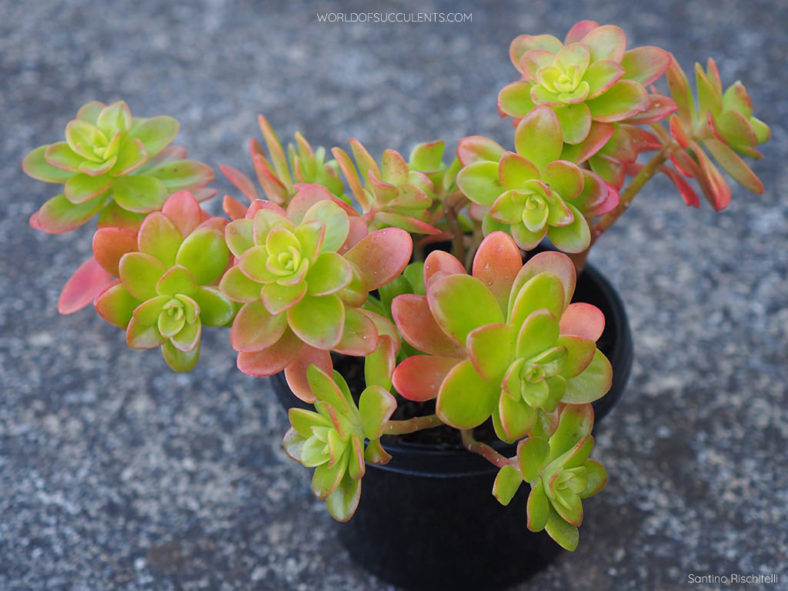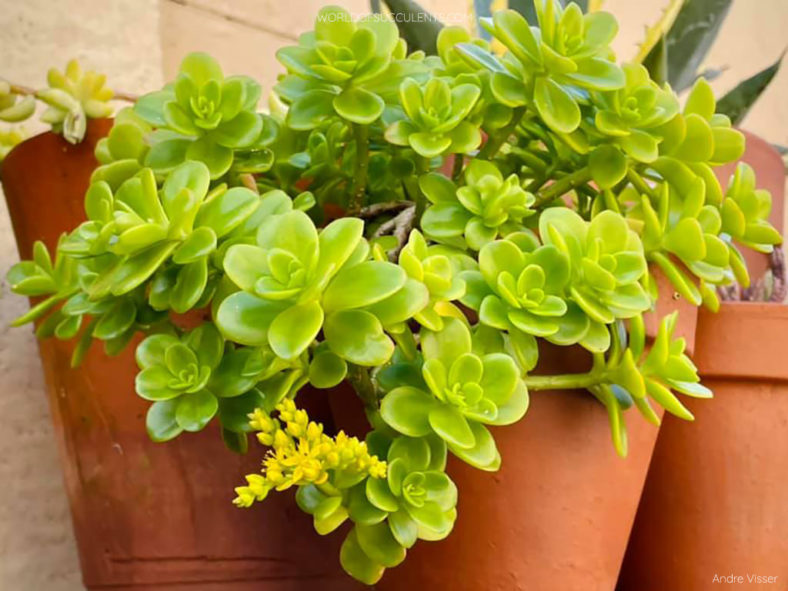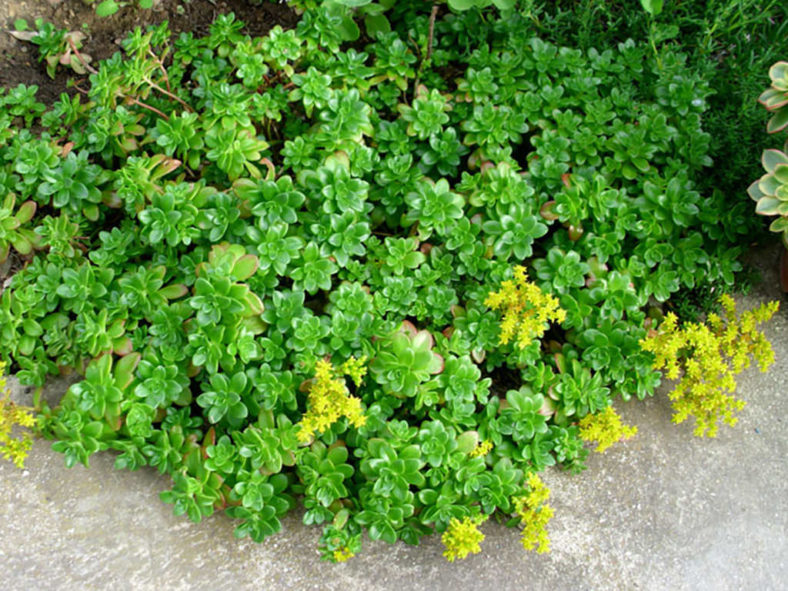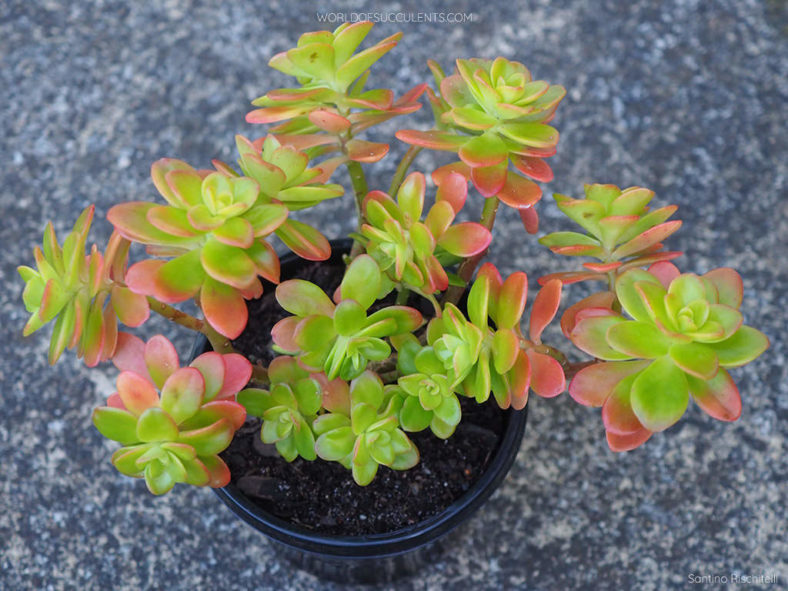Scientific Name
Sedum kimnachii V.V.Byalt
Synonym(s)
Sedum clausenii, Sedum decumbens
Scientific Classification
Family: Crassulaceae
Subfamily: Sempervivoideae
Tribe: Sedeae
Genus: Sedum
Etymology
The specific epithet "kimnachii (kim-NAH-kee-eye)" honors Myron Kimnach (1922-2018), an American botanist, horticulturist, author, explorer, and director of the Huntington Botanical Gardens. He was a succulent, palm, and epiphytic cactus specialist and one of the world's leading authorities on Echeverias.
Origin
Sedum kimnachii is still most commonly sold in nurseries as Sedum confusum, a larger, more upright plant from the highlands of central Mexico. Though the type locality of this lower-growing succulent has never been determined, it is assumed that it also came from this same general area. Sedum kimnachii and Sedum confusum share the same chromosome number, so the former may be just a smaller form of the latter.
Description
Sedum kimnachii is a much-branched succulent subshrub with decumbent stems that can grow up to 10 inches (25 cm) long, often rooting at the nodes and forming dense low mounds. The leaves are fleshy, obovate to spatulate, tend to cluster at the tip of the stems into a tight rosette, and can measure up to 1 inch (2.5 cm) long and 0.5 inches (1.3 cm) wide. They are bright green, sometimes with a reddish-brown flush on the upper side and margins towards the rounded apex.
The flowers are star-shaped, yellow to orangish-yellow, and appear in abundance in early spring in a terminal corymbose panicle with short erect to spreading branches.

How to Grow and Care for Sedum kimnachii
Light: This succulent grows best in locations where it will enjoy the full sun for at least six hours daily. It will tolerate partial shade but will not thrive in deep shade. Keep your indoor plant in a sunny window or under artificial lights.
Soil: S. kimnachii does not like to sit in waterlogged soil, so drainage is essential to prevent root rot. Choose a well-draining soil mix.
Temperature: This plant is tolerant of heat and freezing temperatures. S. kimnachii can withstand temperatures as low as 25 °F (-3.9 °C). USDA Plant Hardiness Zones 9b to 11b, 25 to 50 °F (-3.9 to 10 °C).
Watering: From spring through fall, water thoroughly and wait for the soil to dry out before watering again. In winter, water your plant just enough to keep it from shriveling. Avoid wetting the leaves, stems, and flowers when watering.
Fertilizing: Feed with a balanced organic fertilizer in spring. Feeding is unnecessary as long as the plant is divided annually and provided with fresh soil.
Repotting: Repot your plant when it outgrows its current pot by moving it out to a larger container to hold the plant better. Spring is the best time to repot S. kimnachii. Make sure the soil is dry before you begin repotting.
Propagation: Once you have one S. kimnachii, it is easy to make more by taking stem cuttings and dividing the plant. It is also easy to grow from seed. Take cuttings in spring when the plant is in active growth. Once it has finished flowering, it is the right time for division. Spring or summer is the best time to sow the seeds.
Learn more at How to Grow and Care for Sedum.
Toxicity of Sedum kimnachii
S. kimnachii is not listed as toxic for people but can be mildly toxic to pets and children.
Links
- Back to genus Sedum
- Succupedia: Browse succulents by Scientific Name, Common Name, Genus, Family, USDA Hardiness Zone, Origin, or cacti by Genus
Photo Gallery
Click on a photo to see a larger version.


